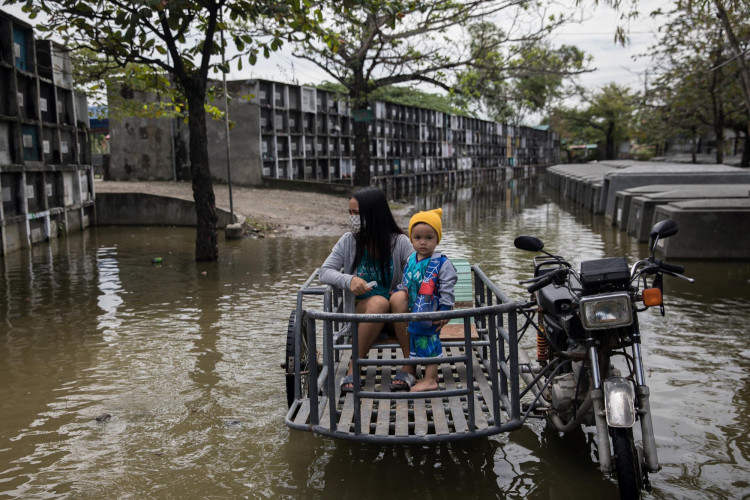The Philippines is bracing for another storm two days after Typhoon Molave claimed the lives of at least nine people and left 13 others missing, the Philippine Atmospheric, Geophysical, and Astronomical Services Administration said Thursday.
The administration said the tropical depression was expected to intensify into a storm and hit the Philippines later Thursday. It has been given the local name "Rolly."
The storm is now 1,910 kilometers east of Central Luzon - packing maximum winds of 55 kilometers an hour and gusts of up to 70 kilometers an hour. It is moving west-northwest at a sustained speed of 10 kilometers an hour.
Rolly will be the 18th storm to hit the Philippines this year following Typhoon Quinta, or Molave as other counties named it. It wreaked havoc in many parts south of the country's main island this week. Rolly will be the fifth tropical cyclone in October. An average of 20 typhoons batter the Philippines each year.
On Wednesday, the National Disaster Risk Reduction and Management Council reported three deaths as a result of drowning and 13 missing persons suspected of being swept away in heavy seas.
According to administration weather specialist Ariel Rojas, the tropical depression "will hit land as a typhoon, which means that it would bring strong winds capable of bringing down trees and destroying structures especially those made of light materials," Inquirer.net quoted him as saying.
Rojas said the administration was keeping a tight watch on the pattern because of possible similar dangers brought by Molave over the archipelago. Heavy rain, floods, landslides and widespread destruction to property and agriculture were reported by authorities after Molave.
Molave affected more than 900,000 in the Philippines before it headed into the South China Sea and for Vietnam on Wednesday - leaving at least two people dead and 26 fishermen missing. The typhoon knocked down trees and tore roofs off homes in some of the worst destruction the country has seen in years.
Vietnam ordered almost 1.3 million people to safety in the past seven days as the nation was ravaged first by storm Saudel before Molave made landfall.
Meanwhile, the Philippines can expect heavy rain in the coming weeks as a result of a La Niña weather episode and the presence of tropical cyclones, Rojas said.
Based on the administration's latest projections, the Philippines will be hit by 10 more typhoons from November 2020 to April next year.






